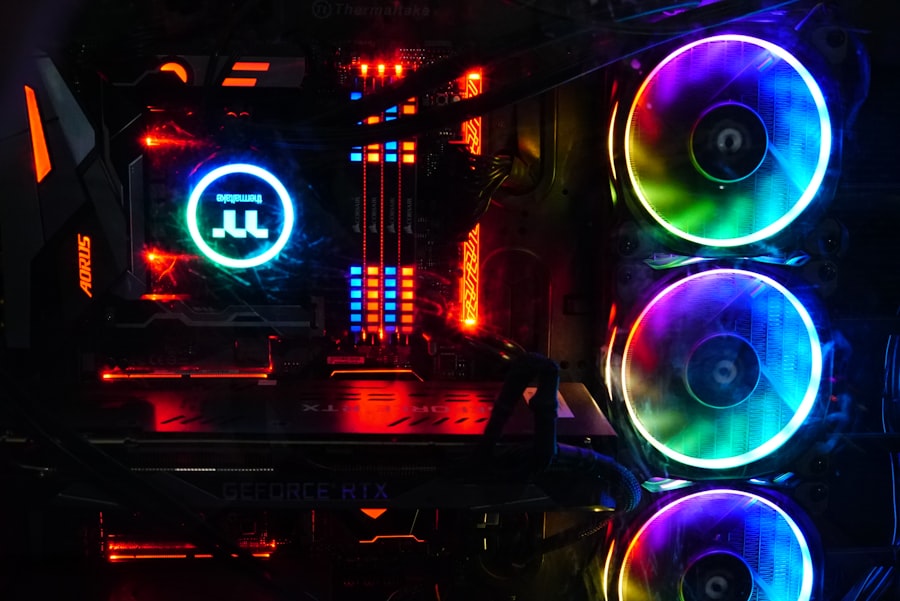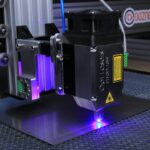African American skin is unique in its composition and requires special care when it comes to hair removal. The skin tends to have more melanin, which makes it more prone to hyperpigmentation and scarring if not treated properly. Additionally, African American hair tends to be coarser and curlier, which can make traditional hair removal methods less effective. Understanding these unique characteristics is crucial when considering at-home laser hair removal for African American skin.
African American skin is more prone to keloid scarring, which is an overgrowth of scar tissue at the site of a healed skin injury. This means that any trauma to the skin, including laser hair removal, must be approached with caution. The high levels of melanin in African American skin also mean that traditional laser hair removal devices may not be as effective, as they target the melanin in the hair follicle and can cause damage to the surrounding skin. It’s important to choose a laser device that is specifically designed for use on darker skin tones to minimize the risk of adverse effects.
Key Takeaways
- African American skin is more prone to hyperpigmentation and keloid scarring, so it’s important to choose laser devices and techniques that are safe for darker skin tones.
- When choosing an at-home laser device for hair removal, look for ones specifically designed and tested for use on African American skin and hair to minimize the risk of adverse effects.
- Before starting at-home laser hair removal, prepare your skin by avoiding sun exposure, exfoliating, and shaving the treatment area to ensure the best results and minimize potential side effects.
- To perform at-home laser hair removal safely on African American skin, follow the device instructions carefully, start with a lower intensity, and perform a patch test to check for any adverse reactions.
- It’s important to manage side effects and risks of at-home laser hair removal on African American skin by using soothing creams, avoiding sun exposure, and seeking professional assistance if necessary.
- To maintain results and manage regrowth after at-home laser hair removal, consider touch-up treatments and continue to follow a skincare routine that is suitable for African American skin.
- Seek professional assistance when necessary, especially if you experience severe side effects, scarring, or if you are not seeing the desired results from at-home laser hair removal.
Choosing the Right At-Home Laser Device
When it comes to at-home laser hair removal for African American skin, not all devices are created equal. It’s crucial to choose a laser device that is specifically designed for use on darker skin tones to minimize the risk of burns, hyperpigmentation, and scarring. Look for devices that use advanced technology such as diode lasers or IPL (intense pulsed light) that are safe for use on darker skin tones. These devices are designed to target the hair follicle without causing damage to the surrounding skin.
Additionally, consider the size of the treatment area and the speed of the device. For larger areas such as the legs or back, a device with a larger treatment window and faster pulse rate will be more efficient. Some devices also come with different energy settings, allowing you to adjust the intensity of the treatment based on your skin tone and hair thickness. Take the time to research and read reviews to find a device that is safe and effective for at-home laser hair removal on African American skin.
Preparing Your Skin for Laser Hair Removal
Before starting at-home laser hair removal, it’s important to properly prepare your skin to ensure the best results and minimize the risk of side effects. Start by shaving the treatment area a day or two before your session. This helps the laser energy target the hair follicle more effectively without singeing the surface of the skin. Avoid waxing or plucking the hair, as this can disrupt the hair growth cycle and make laser hair removal less effective.
It’s also important to avoid sun exposure and tanning beds before and after your laser hair removal sessions. African American skin is more prone to hyperpigmentation, and sun exposure can increase the risk of discoloration and scarring. Use a broad-spectrum sunscreen with an SPF of 30 or higher to protect your skin from UV rays. Additionally, avoid using any skincare products that contain retinoids or exfoliating acids on the treatment area, as these can make your skin more sensitive to the laser energy.
Performing At-Home Laser Hair Removal Safely
| Factors | Considerations |
|---|---|
| Skin Tone | Check if the device is suitable for your skin tone |
| Hair Color | Ensure the device is effective for your hair color |
| Safety Goggles | Use safety goggles to protect your eyes |
| Test Patch | Always do a test patch before full treatment |
| Follow Instructions | Read and follow the device instructions carefully |
Safety is paramount when performing at-home laser hair removal, especially on African American skin. Start by conducting a patch test on a small area of your skin to ensure that you don’t have an adverse reaction to the laser device. Follow the manufacturer’s instructions carefully and never exceed the recommended energy settings for your skin tone and hair thickness. It’s better to start with a lower energy setting and gradually increase it as needed to avoid causing damage to your skin.
When using the laser device, wear protective eyewear to shield your eyes from the bright light. Hold the device perpendicular to your skin and make sure to overlap each treatment area slightly to ensure full coverage. Take your time and move the device in a slow, steady motion to ensure that each hair follicle receives an adequate amount of laser energy. After each session, apply a soothing gel or aloe vera to calm any redness or irritation.
Managing Side Effects and Risks
Even with proper preparation and safe use of at-home laser devices, there is still a risk of side effects, especially for African American skin. Common side effects include redness, swelling, and mild discomfort, which should subside within a few hours after treatment. However, if you experience any blistering, crusting, or changes in pigmentation, stop using the device immediately and consult a dermatologist.
To manage side effects, apply a cold compress or ice pack to the treated area to reduce swelling and discomfort. Avoid using any harsh skincare products or exfoliants on the treated area, as this can further irritate the skin. If you experience any discomfort, over-the-counter pain relievers such as ibuprofen can help alleviate any pain or inflammation. It’s important to closely monitor your skin after each session and seek medical attention if you notice any concerning changes.
Maintaining Results and Managing Regrowth

After completing your at-home laser hair removal sessions, it’s important to maintain your results and manage any regrowth effectively. Keep in mind that laser hair removal is not permanent and may require touch-up sessions every few months to maintain smooth, hair-free skin. Additionally, some hair follicles may become dormant during treatment and reactivate over time, leading to regrowth.
To manage regrowth, consider using an exfoliating scrub or mitt to gently buff away any dead skin cells and help release trapped hairs. You can also consider using a topical retinoid or prescription-strength cream to help slow down hair regrowth between sessions. If you notice any areas with significant regrowth, consider scheduling touch-up sessions with your at-home laser device to maintain smooth, hair-free skin.
Seeking Professional Assistance when Necessary
While at-home laser hair removal can be effective for many individuals, there are times when professional assistance may be necessary, especially for African American skin. If you experience any adverse effects such as hyperpigmentation, scarring, or persistent discomfort, it’s important to seek the expertise of a dermatologist or licensed laser technician. They can assess your skin and provide targeted treatments to address any concerns.
Additionally, if you have areas of dense or coarse hair that are difficult to treat with an at-home device, consider seeking professional laser hair removal at a reputable medical spa or dermatology clinic. Professional-grade lasers are equipped with advanced technology that can safely and effectively target stubborn hairs without causing damage to the surrounding skin. A trained professional can also provide personalized advice and treatment plans tailored to your unique skin type and hair concerns.
In conclusion, at-home laser hair removal can be a safe and effective option for African American individuals when approached with caution and proper preparation. By understanding the unique characteristics of African American skin and hair, choosing the right at-home laser device, preparing your skin for treatment, performing laser hair removal safely, managing side effects and regrowth, and seeking professional assistance when necessary, you can achieve smooth, hair-free skin with minimal risk of adverse effects. Always prioritize safety and consult with a professional if you have any concerns about at-home laser hair removal on African American skin.
If you’re considering at-home laser hair removal for African American skin, it’s important to do your research and understand the specific needs of your skin type. In a related article on inlaserhairremoval.com, you can learn about the best practices for laser hair removal on sensitive areas like the bikini line. Understanding the nuances of laser hair removal for different body areas and skin types can help you achieve the best results while minimizing potential risks.
FAQs
What is at-home laser hair removal for African American skin?
At-home laser hair removal for African American skin is a method of removing unwanted hair using a handheld device that emits laser light to target the hair follicles. This method is specifically designed to be safe and effective for individuals with darker skin tones.
How does at-home laser hair removal work for African American skin?
At-home laser hair removal works by targeting the melanin in the hair follicles with laser light. The heat from the laser damages the follicle, inhibiting future hair growth. It is important to use a device specifically designed for darker skin tones to avoid potential skin damage.
Is at-home laser hair removal safe for African American skin?
When used properly and with a device specifically designed for darker skin tones, at-home laser hair removal can be safe for African American skin. It is important to carefully follow the instructions and precautions provided with the device to minimize the risk of skin damage.
What are the benefits of at-home laser hair removal for African American skin?
The benefits of at-home laser hair removal for African American skin include long-lasting hair reduction, convenience of use at home, and potential cost savings compared to professional treatments. It can also be a more comfortable and less time-consuming alternative to traditional hair removal methods.
Are there any potential risks or side effects of at-home laser hair removal for African American skin?
Potential risks and side effects of at-home laser hair removal for African American skin may include skin irritation, redness, or temporary pigment changes. It is important to perform a patch test and follow the recommended treatment schedule to minimize these risks. If in doubt, consult a dermatologist before using the device.





